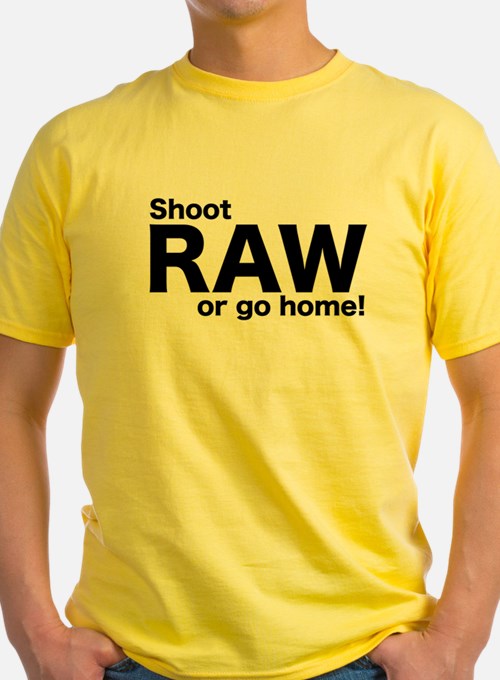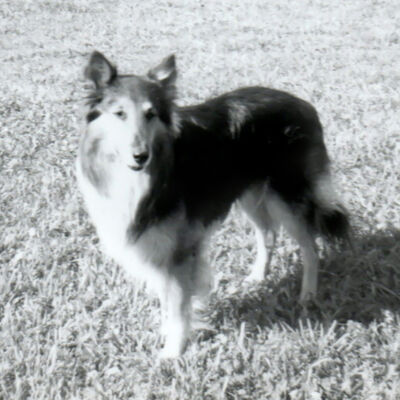Maybe it's about a good image, a well-processed image and not about RAW/JPG
May 20, 2017 11:34:19 #
BigDaddy wrote:
... I personally haven't used TIFF files since PHOTOGRAFX, long, long before raw files were available. ...
The advantages with a TIFF are twofold.
First, they are lossless. You can save and edit repeatedly and nothing is lost due to compression.
Second and more important, a 16-bit TIFF has the potential for 65536 values for each color - 256x as many as for any 8-bit image including an 8-bit TIFF. You can make many subtle changes in tonality, color, vignette and gradient without producing any visible banding. When you are done you can convert it back to 8 bits. An 8-bit TIFF will be half as big but a JPEG can compress it even more. If you don't compress aggressively, you probably won't be able to see the difference.
May 20, 2017 11:37:58 #
jenny wrote:
* * * * *
Maybe you meant the only thing that SHOULD matter is the image? Obviously it doesn't matter how you phrase or define
anything because for some people the process matters MORE !!! Therefore a raw snapshot may be "better" than a JPEG masterpiece,
but only would they believe maybe if we still had Galen Rowell to tell them.
Maybe you meant the only thing that SHOULD matter is the image? Obviously it doesn't matter how you phrase or define
anything because for some people the process matters MORE !!! Therefore a raw snapshot may be "better" than a JPEG masterpiece,
but only would they believe maybe if we still had Galen Rowell to tell them.
I guess I was referring to the viewer. If that viewer likes the image he doesn'y know the details of how the image was made. Same for a painting, the viewer doesn't know what brushes the painter used. And unless that wiewer is interested in technique (either painting or photography)That viewer doesn't care. So the only thing that matters is the image.
May 20, 2017 11:39:30 #
TheDman wrote:
Here is a side by side comparison, raw and jpg, straight out of the camera, default settings. The difference is so severe I can even see it on my phone. ...
What you are seeing is because your camera is not set up correctly to produce a better JPEG.
The difference is more likely the result of how much sharpening the camera did or did not do when it created the JPEG.
Both images contain the same number of pixels so both have the same potential for sharpness.
May 20, 2017 11:47:40 #
TheDman
Loc: USA
selmslie wrote:
What you are seeing is because your camera is not set up correctly to produce a better JPEG.
The difference is more likely the result of how much sharpening the camera did or did not do when it created the JPEG.
Both images contain the same number of pixels so both have the same potential for sharpness.
The difference is more likely the result of how much sharpening the camera did or did not do when it created the JPEG.
Both images contain the same number of pixels so both have the same potential for sharpness.
No, it's the result of noise reduction being automatically applied, as the thread detail was
completely destroyed. That doesn't have anything to do with sharpening.
May 20, 2017 12:05:59 #
TheDman wrote:
No, it's the result of noise reduction being automatically applied, as the thread detail was
completely destroyed. That doesn't have anything to do with sharpening.
completely destroyed. That doesn't have anything to do with sharpening.
Noise reduction and sharpening are two sides of the same see-saw.
Your JPEG used too much noise reduction so it destroyed the detail.
May 20, 2017 12:16:15 #
davyboy
Loc: Anoka Mn.
BigDaddy wrote:
I process every single jpg worth keeping. If you ... (show quote)
Big daddy you got in goin on son!! I agree with you very well stated😁👏👏
May 20, 2017 12:17:09 #
wdross
Loc: Castle Rock, Colorado
chasgroh wrote:
...do you mean he's not truth-telling? Because "anecdotal" has that as its base, personal experience included. When I read stuff like this "story," I tend to think that the writer actually read of the account in a bio/history and is simply recalling in his own words.
You are correct. The story came from his from one of his studio assistants that went on to do simular work as Ansel's. If I remember right, the assistant was John Sexton.
May 20, 2017 12:19:15 #
selmslie wrote:
What you are seeing is because your camera is not set up correctly to produce a better JPEG.
The difference is more likely the result of how much sharpening the camera did or did not do when it created the JPEG.
Both images contain the same number of pixels so both have the same potential for sharpness.
The difference is more likely the result of how much sharpening the camera did or did not do when it created the JPEG.
Both images contain the same number of pixels so both have the same potential for sharpness.
I would have thought excessive noise reduction. the weave is being confused with high frequency noise.
It's not really what this thread was intended to be about raw and jpeg are diversions that are easy to argue about but have nothing to do with a good image really, only how much you can polish it really. Pretty much post processing as far as tones are concerned is getting them to reveal or hide detail within the range we can reproduce. In normal light looking at a piece of white card isn't going to be too bright for the eye but if we go out and look directly at the sun we might never be able to see anything again. So we really map what we see in the world into a smaller tone space so relatively they can represent what we see in the real world.
Part of seeing is how our brains are wired e.g looking out a window we can see different colors we can also see tones inside the room as well. For a camera either we see the tones outside and inside is in near darkness or we see the tones inside and outside is blown out. If our eyes work similarly to a camera we wouldn't be able to see the range we do. So some of what we are seeing is probably memory as we adjust our focus on the world around us.
What we see is one concentrated range of tones really.
It's easy to argue about raw and jpeg and 14 bit 12 bit 8 bit tones but really that wasn't the intention of this thread but a much harder question what makes a good image? This is a much harder thing to pin down. I'm doubtful it can be expressed in words.
If anybody can quantify what makes a good image then there would be a photographer who can always make a good image.
I'm unaware of any photographer who succeeds every time. So there is no quick and easy rule.
Rule of thirds? No you can apply that and make a bad image same with sharpness or any other single aspect.
It appears to be a combination of things but seems impossible to nail down. Which is why i think this thread has been derailed by the old raw and jpeg argument because thats relatively easy to argue but whats a good image pretty much leaves us stumped. If we really knew the answer we would be out producing excellent photographs and earning from every shot.
May 20, 2017 12:24:21 #
BigDaddy wrote:
I process every single jpg worth keeping. If you ... (show quote)
Ok. Actually, on the flowers with a black background. I said that one was shot indoors, thus a black cloth. The other one, however, the Dogwood against the Merced River was shot outdoors on-site. Fun to be able to get a black background when shooting on site.
May 20, 2017 12:26:55 #
selmslie wrote:
The advantages with a TIFF are twofold. br br F... (show quote)
OK, I said PDF but meant photoshops PSD file format. Don't know why I said PDF, I never created a pdf file in my life. PSD files are lossless and can be saved over and over without loss due to compression, and preserve all the layers and edits, and can be 16 bit, and raster or vector images. Not saying which to use, but, if editing in Photoshop, there is no reason not to use PSD files that I have experienced. I used TIFF files because they were the lossless format MICROGRAFIX used many, many years ago. (Originally said Photografix)
May 20, 2017 12:28:23 #
blackest wrote:
I would have thought excessive noise reduction. th... (show quote)
Thanks so much for the great reply.
May 20, 2017 12:35:53 #
blackest wrote:
I would have thought excessive noise reduction. the weave is being confused with high frequency noise. ...
That's what I said in my next post.
selmslie wrote:
Noise reduction and sharpening are two sides of the same see-saw.
Your JPEG used too much noise reduction so it destroyed the detail.
Your JPEG used too much noise reduction so it destroyed the detail.
The problem is that TheDman knows how to edit the raw file but apparently does not know how to set up his camera to create a decent JPEG.
What he has presented as evidence is an image processed well from raw and a poorly processed JPEG. That's not a fair comparison.
But this thread is "not about raw/JPEG." He has his own thread on that topic and he has put people on his 'Ignore' list that could point out his fallacy.
May 20, 2017 12:38:23 #
BigDaddy wrote:
OK, I said PDF but meant photoshops PSD file format. ...
I figured that you know the difference and just miss-typed it.
May 20, 2017 13:04:15 #
wdross
Loc: Castle Rock, Colorado
via the lens wrote:
Actually, he had an almost photographic memory (no pun intended). He could remember exactly what happened in even his very early years. For him, f/stop and shutter speed did matter and he was most likely being somewhat funny in his response; he also had a tremendous and at times, inappropriate, sense of humor.
Ansel Adams had a good respect for the importance of every individual. One of the other stories he related was that Ansel was talking to the garbage man. His assistant came out and told him that the President of the United States was on the phone wanting him to do a formal photograph. He told the assistant to tell him that he would be there in minute and then continued on to finish his conversation with the garbage man. Talking to the garbage man was no less important that talking to the President.
May 20, 2017 13:41:45 #
davyboy wrote:
Big daddy you got in goin on son!! I agree with you very well statedððð
Thanks davyboy, always good to know at least 2 people agree with me, and don't wear the t-shirt...

If you want to reply, then register here. Registration is free and your account is created instantly, so you can post right away.




